Impact of Boreal Summer Intra-Seasonal Oscillations on the Heavy Rainfall Events in Taiwan during the 2017 Meiyu Season
Abstract
:1. Introduction
2. Data and Methodology
2.1. Data
2.2. Calculation of the BSISO Index
2.3. Potential Function of the Vertically Integrated Moisture Flux
3. Results
4. Discussion
5. Conclusions
Supplementary Materials
Author Contributions
Funding
Acknowledgments
Conflicts of Interest
References
- Chen, T.C.; Huang, W.R.; Yen, M.C. Interannual Variation of the Late Spring-Early Summer Monsoon Rainfall in the Northern Part of the South China Sea. J. Clim. 2011, 24, 4295–4313. [Google Scholar] [CrossRef]
- Huang, W.R.; Chen, K.C. Trends in Pre-Summer Frontal and Diurnal Rainfall Activities during 1982–2012 over Taiwan and Southeast China: Characteristics and Possible Causes. Int. J. Climatol. 2015, 35, 2608–2619. [Google Scholar] [CrossRef]
- Huang, W.R.; Huang, P.H.; Chang, Y.H.; Cheng, C.T.; Hsu, H.H.; Tu, C.Y.; Kitoh, A. Dynamical Downscaling Simulation and Future Projection of Extreme Precipitation Activities in Taiwan during the Mei-Yu Seasons. J. Meteorol. Soc. Jpn. 2019, 97. [Google Scholar] [CrossRef]
- Wang, C.C.; Kung, C.Y.; Lee, C.S.; Chen, G.T.J. Development and evaluation of Mei-yu season quantitative precipitation forecast in Taiwan river basins based on a conceptual climatology model. Weather Forecast. 2012, 27, 586–607. [Google Scholar] [CrossRef]
- Yim, S.Y.; Wang, B.; Xing, W. Prediction of early summer rainfall over South China by a physical-empirical model. Clim. Dyn. 2014, 43, 1883–1891. [Google Scholar] [CrossRef]
- Yim, S.Y.; Wang, B.; Xing, W.; Lu, M.M. Prediction of Meiyu rainfall in Taiwan by multi-lead physical-empirical models. Clim. Dyn. 2015, 44, 3033–3042. [Google Scholar] [CrossRef]
- Chang, Y.H.; Chen, K.C.; Huang, W.R. Application and Improvement of Physical-Empirical Model on the Prediction of Interannual Variation of Meiyu Season Rainfall in Taiwan. Atmos. Sci. 2017, 45, 333–348, (In Chinese with an English Abstract). [Google Scholar]
- Wang, C.C.; Paul, S.; Chien, F.C.; Lee, D.I.; Chuang, P.Y. An evaluation of WRF rainfall forecasts in Taiwan during three mei-yu seasons from 2008 to 2010. Weather Forecast. 2017, 32, 1329–1351. [Google Scholar] [CrossRef]
- Wang, C.C.; Chen, G.T.J.; Ngai, C.H.; Tsuboki, K. Case study of a morning convective rainfall event over southwestern Taiwan in the Mei-yu season under weak synoptic conditions. J. Meteorol. Soc. Jpn. 2018, 96, 461–484. [Google Scholar] [CrossRef]
- Lee, J.Y.; Wang, B.; Wheeler, M.C.; Fu, X.; Waliser, D.E.; Kang, I.S. Real-time multivariate indices for the boreal summer intraseasonal oscillation over the Asian summer monsoon region. Clim. Dyn. 2013, 40, 493–509. [Google Scholar] [CrossRef]
- Lee, S.S.; Wang, B.; Waliser, D.; Neena, J.M.; Lee, J.Y. Predictability and prediction skill of the boreal summer intraseasonal oscillation in the Intraseasonal Variability Hindcast Experiment. Clim. Dyn. 2015, 45, 2123–2135. [Google Scholar] [CrossRef] [Green Version]
- Lee, S.; Moon, J.; Wang, B.; Kim, H. Subseasonal Prediction of Extreme Precipitation over Asia: Boreal Summer Intraseasonal Oscillation Perspective. J. Clim. 2017, 30, 2849–2865. [Google Scholar] [CrossRef]
- Huang, W.R.; Chang, Y.H. Impact of Boreal Summer Intraseasonal Oscillations on Warm Season Diurnal Convection Activity in Taiwan. Int. J. Climatol. 2018, 38, 2187–2200. [Google Scholar] [CrossRef]
- Fu, X.; Lee, J.; Wang, B.; Wang, W.; Vitart, F. Intraseasonal Forecasting of the Asian Summer Monsoon in Four Operational and Research Models. J. Clim. 2013, 26, 4186–4203. [Google Scholar] [CrossRef]
- Li, J.; Mao, J.; Wu, G. A case study of the impact of boreal summer intraseasonal oscillations on Yangtze rainfall. Clim. Dyn. 2015, 44, 2683–2702. [Google Scholar] [CrossRef]
- Hsu, P.C.; Lee, J.Y.; Ha, K.J. Influence of boreal summer intraseasonal oscillation on rainfall extremes in southern China. Int. J. Clim. 2016, 36, 1403–1412. [Google Scholar] [CrossRef]
- Hung, C.; Lin, H.J.; Kao, P.; Shih, M.F.; Fong, W. Boreal summer intraseasonal oscillation impact on western North Pacific typhoons and rainfall in Taiwan. Terr. Atmos. Ocean. Sci. 2016, 27, 893–906. [Google Scholar] [CrossRef]
- Ren, P.; Ren, H.L.; Fu, J.X.; Wu, J.; Du, L. Impact of boreal summer intraseasonal oscillation on rainfall extremes in southeastern China and its predictability in CFSv2. J. Geophys. Res. Atmos. 2018, 123, 4423–4442. [Google Scholar] [CrossRef]
- Xu, W.; Rutledge, S.A. Convective Variability Associated with the Boreal Summer Intraseasonal Oscillation in the South China Sea Region. J. Clim. 2018, 31, 7363–7383. [Google Scholar] [CrossRef]
- Chen, T.C.; Wang, S.Y.; Huang, W.R.; Yen, M.C. Variation of the East Asian Summer Monsoon Rainfall. J. Clim. 2004, 17, 744–762. [Google Scholar] [CrossRef]
- Achuthavarier, D.; Krishnamurthy, V. Relation between intraseasonal and interannual variability of the South Asian monsoon in the National centers for environmental prediction forecast systems. J. Geophys. Res. 2010, 115, D08104. [Google Scholar] [CrossRef]
- Shin, C.S.; Huang, B. Slow and fast annual cycles of the Asian Summer Monsoon in the NCEP CFSv2. Clim. Dyn. 2016, 47, 529–553. [Google Scholar] [CrossRef]
- Hsu, P.C.; Lee, J.Y.; Ha, K.J.; Tsou, C.H. Influences of Boreal Summer Intraseasonal Oscillation on Heat Waves in Monsoon Asia. J. Clim. 2017, 30, 7191. [Google Scholar] [CrossRef]
- Diao, Y.; Li, T.; Hsu, P.C. Influence of the Boreal Summer Intraseasonal Oscillation on Extreme Temperature Events in the Northern Hemisphere. J. Meteorol. Res. 2018, 32, 534. [Google Scholar] [CrossRef]
- Zhao, H.; Chen, S.; Klotzbach, P.J.; Raga, G.B. Impact of the Extended Boreal Summer Intraseasonal Oscillation on Western North Pacific Tropical Cloud Cluster Genesis Productivity. J. Clim. 2018, 31, 9175. [Google Scholar] [CrossRef]
- Kanamitsu, M.; Ebisuzaki, W.; Woollen, J.; Yang, S.K.; Hnilo, J.J.; Fiorino, M.; Potter, G.L. NCEP-DOE AMIP-II Reanalysis (R-2). Bull. Am. Meteorol. Soc. 2002, 83, 1631–1643. [Google Scholar] [CrossRef]
- Huffman, G.J.; Bolvin, D.T.; Braithwaite, D.; Hsu, K.; Joyce, R.; Kidd, C.; Nelkin, E.J.; Sorooshian, S.; Tan, J.; Xie, P. NASA Global Precipitation Measurement (GPM) Integrated Multi-SatellitE Retrievals for GPM (IMERG); Algorithm Theoretical Basis Document (ATBD) Version 5.1; NASA: Greenbelt, MD, USA, 2017.
- Huang, W.R.; Chang, Y.H.; Liu, P.Y. Assessment of IMERG precipitation over Taiwan at multiple timescales. Atmos. Res. 2018, 214, 239–249. [Google Scholar] [CrossRef]
- Ek, M.; Mitchell, K.E.; Lin, Y.; Rogers, E.; Grunmann, P.; Koren, V.; Gayno, G.; Tarpley, J.D. Implementation of Noah land-surface model advances in the NCEP operational mesoscale Eta model. J. Geophys. Res. Atmos. 2003, 108, 8851. [Google Scholar] [CrossRef]
- Hong, S.Y.; Pan, H.L. Nonlocal boundary layer vertical diffusion in a medium-range forecast model. Mon. Weather Rev. 1996, 124, 2322–2339. [Google Scholar] [CrossRef]
- Han, J.; Pan, H.L. Revision of Convection and Vertical Diffusion Schemes in the NCEP Global Forecast System. Weather Forecast. 2011, 26, 520–533. [Google Scholar] [CrossRef]
- Zhao, Q.Y.; Carr, F.H. A prognostic cloud scheme for operational NWP models. Mon. Weather Rev. 1997, 125, 1931–1953. [Google Scholar] [CrossRef]
- Clough, S.A.; Shephard, M.W.; Mlawer, E.J.; Delamere, J.S.; Iacono, M.J.; Cady-Pereira, K.; Boukabara, S.; Brown, P.D. Atmospheric radiative transfer modeling: A summary of the AER codes. J. Quant. Spectrosc. Radiat. Transf. 2005, 91, 233–244. [Google Scholar] [CrossRef]
- Iacono, M.J.; Delamere, J.S.; Mlawer, E.J.; Shephard, M.W.; Clough, S.A.; Collins, W.D. Radiative forcing by long-lived greenhouse gases: Calculations with the AER radiative transfer models. J. Geophys. Res. Atmos. 2008, 113, D13103. [Google Scholar] [CrossRef]
- Kim, Y.J.; Arakawa, A. Improvement of orographic gravity wave parameterization using a mesoscale gravity wave model. J. Atmos. Sci. 1995, 52, 1875–1902. [Google Scholar] [CrossRef]
- Palmer, T.N.; Shutts, G.; Swinbank, R. Alleviation of a systematic westerly bias in general circulation and numerical weather prediction models through an orographic gravity wave drag parameterization. Quart. J. R. Meteorol. Soc. 1986, 112, 1001–1039. [Google Scholar] [CrossRef]
- Chun, H.; Baik, J. Momentum Flux by Thermally Induced Internal Gravity Waves and Its Approximation for Large-Scale Models. J. Atmos. Sci. 1998, 55, 3299–3310. [Google Scholar] [CrossRef]
- Scinocca, J.F. An Accurate Spectral Non-Orographic Gravity Wave Parameterization for General Circulation Models. J. Atmos. Sci. 2003, 60, 667–682. [Google Scholar] [CrossRef]
- Wang, B. The vertical structure and development of the ENSO anomaly mode during 1979–1989. J. Atmos. Sci. 1992, 49, 698–712. [Google Scholar] [CrossRef]
- Lin, H.; Brunet, G.; Derome, J. Forecast skill of the Madden–Julian oscillation in two Canadian atmospheric models. Mon. Weather Rev. 2008, 136, 4130–4149. [Google Scholar] [CrossRef]
- Gottschalck, J.; Wheeler, M.; Weickmann, K.; Vitart, F.; Savage, N.; Lin, H.; Hendon, H.; Waliser, D.; Sperber, K.; Nakagawa, M.; et al. A Framework for Assessing Operational Madden-Julian Oscillation Forecasts. Bull. Am. Meteorol. Soc. 2010, 91, 1247–1258. [Google Scholar] [CrossRef]
- Charba, J.P.; Samplatsky, F.G. High-Resolution GFS-Based MOS Quantitative Precipitation Forecasts on a 4-km Grid. Mon. Weather Rev. 2011, 139, 39–68. [Google Scholar] [CrossRef]
- Zhang, B.; Lindzen, R.S.; Tallapragada, V.; Weng, F.; Liu, Q.; Slippel, J.A.; Ma, Z.; Bender, M.A. Increasing vertical resolution in US models to improve track forecasts of Hurricane Joaquin with HWRF as an example. Proc. Natl. Acad. Sci. USA 2016, 113, 11765–11769. [Google Scholar] [CrossRef] [PubMed] [Green Version]
- Zhou, X.; Zhu, Y.; Hou, D.; Luo, Y.; Peng, J.; Wobus, R. Performance of the New NCEP Global Ensemble Forecast System in a Parallel Experiment. Weather Forecast. 2017, 32, 1989–2004. [Google Scholar] [CrossRef]
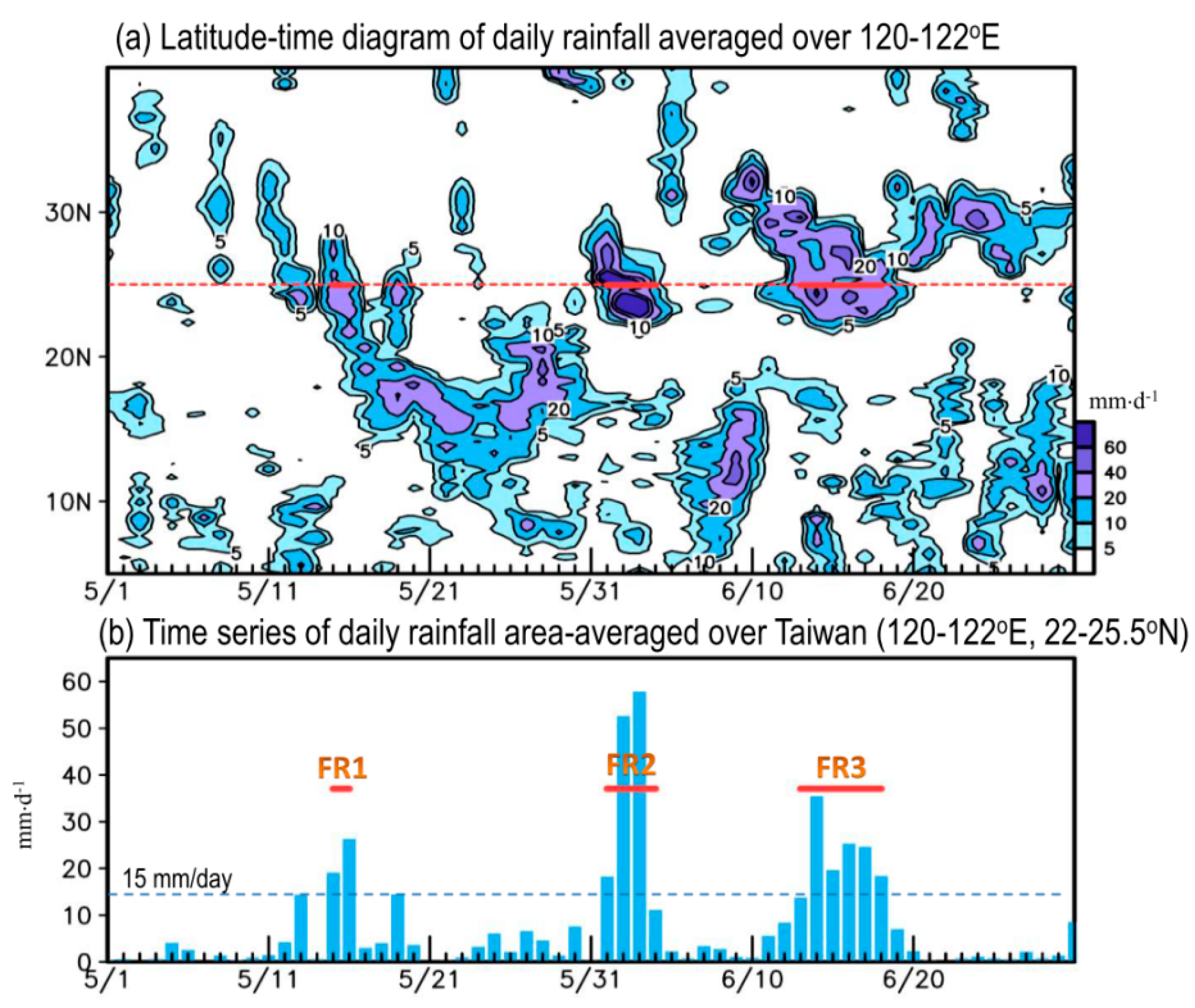
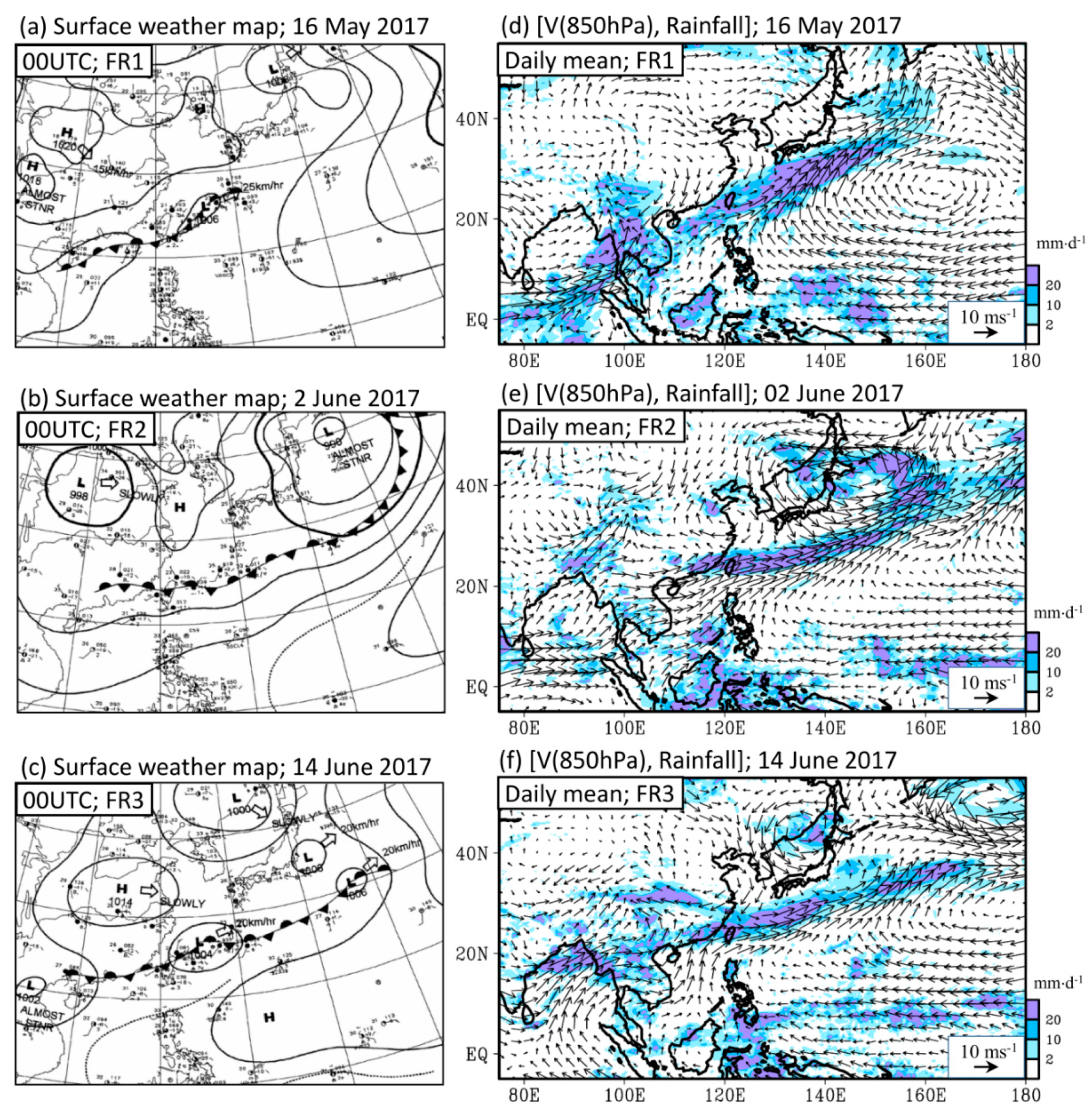
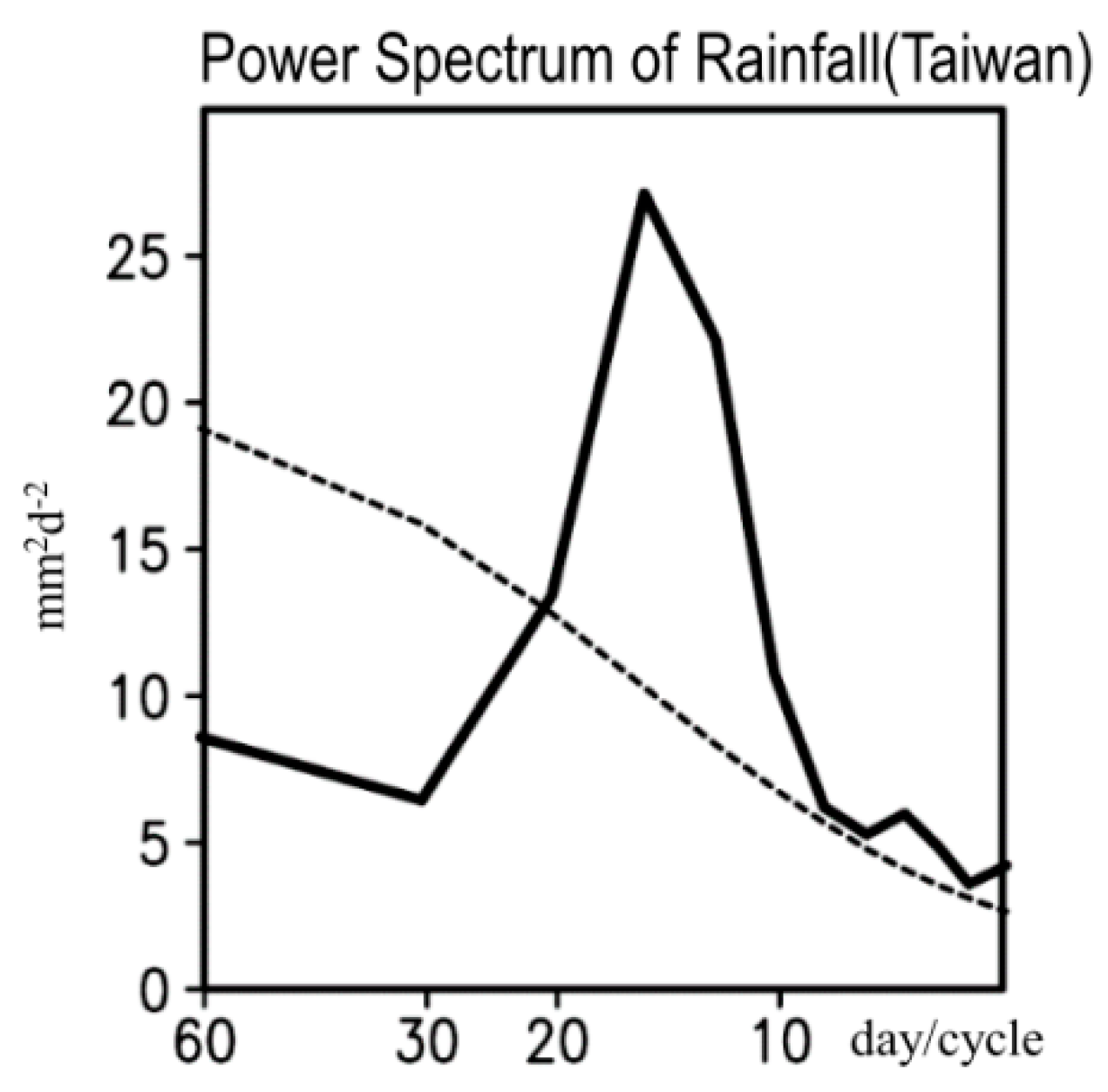

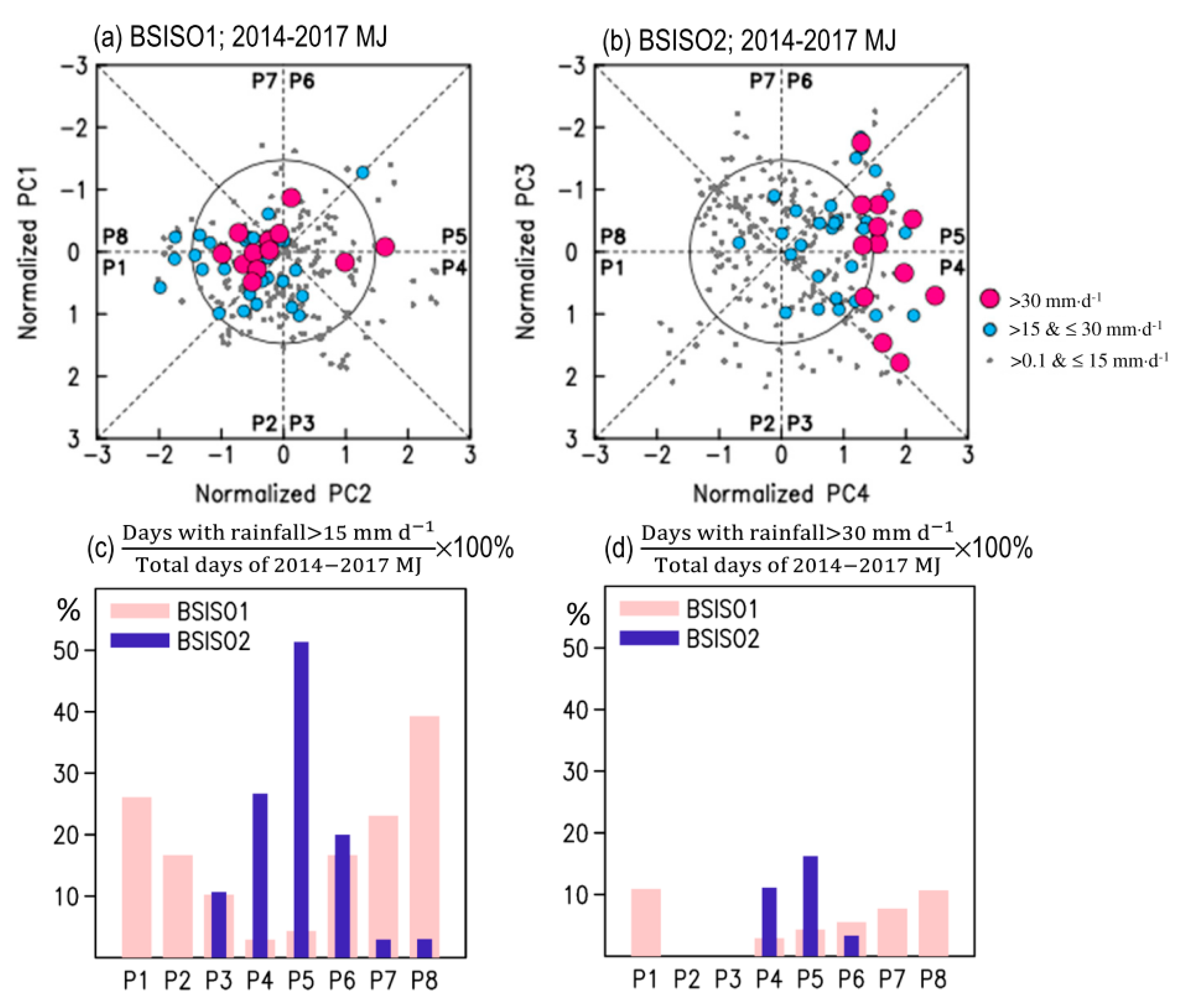

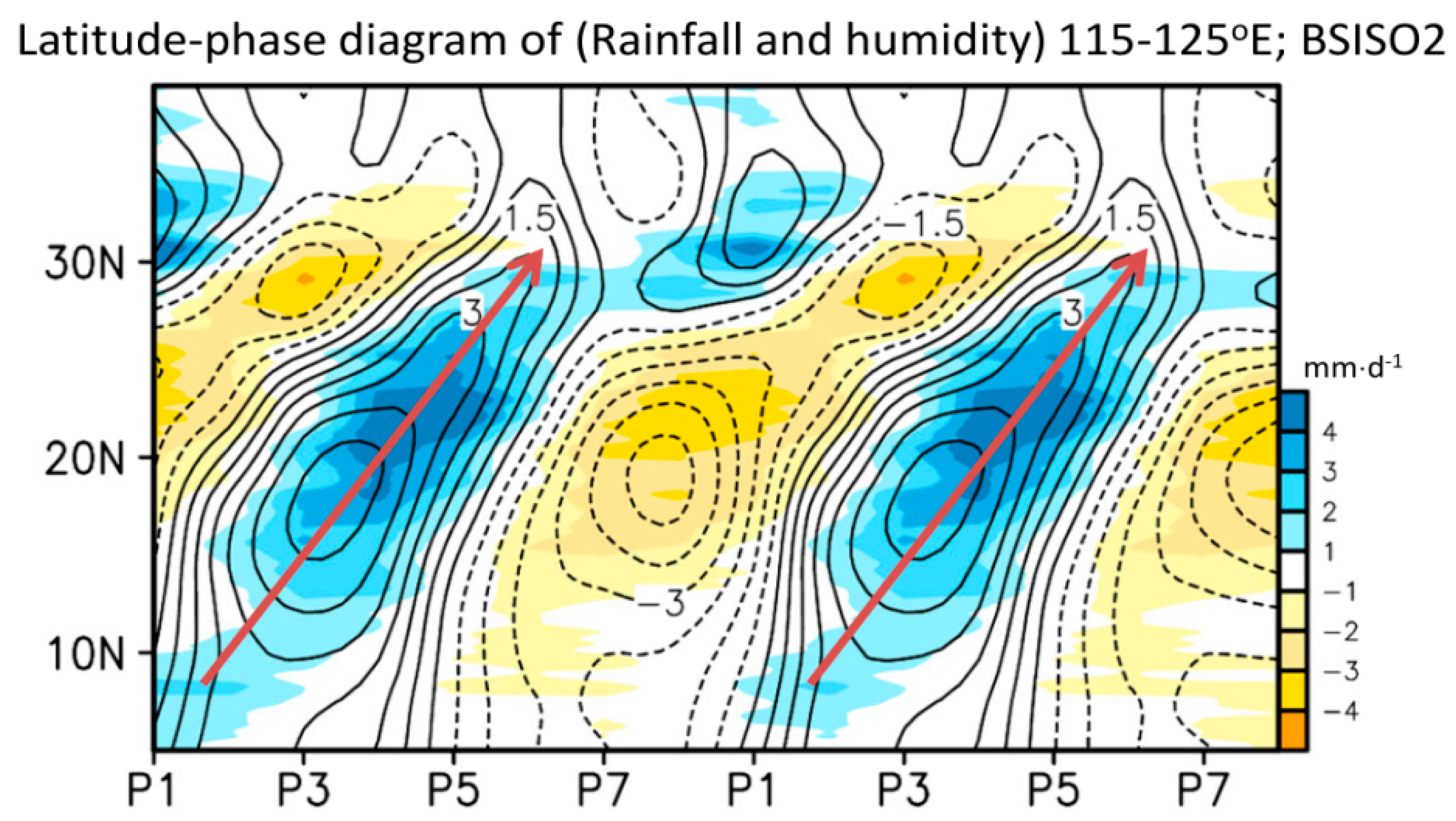
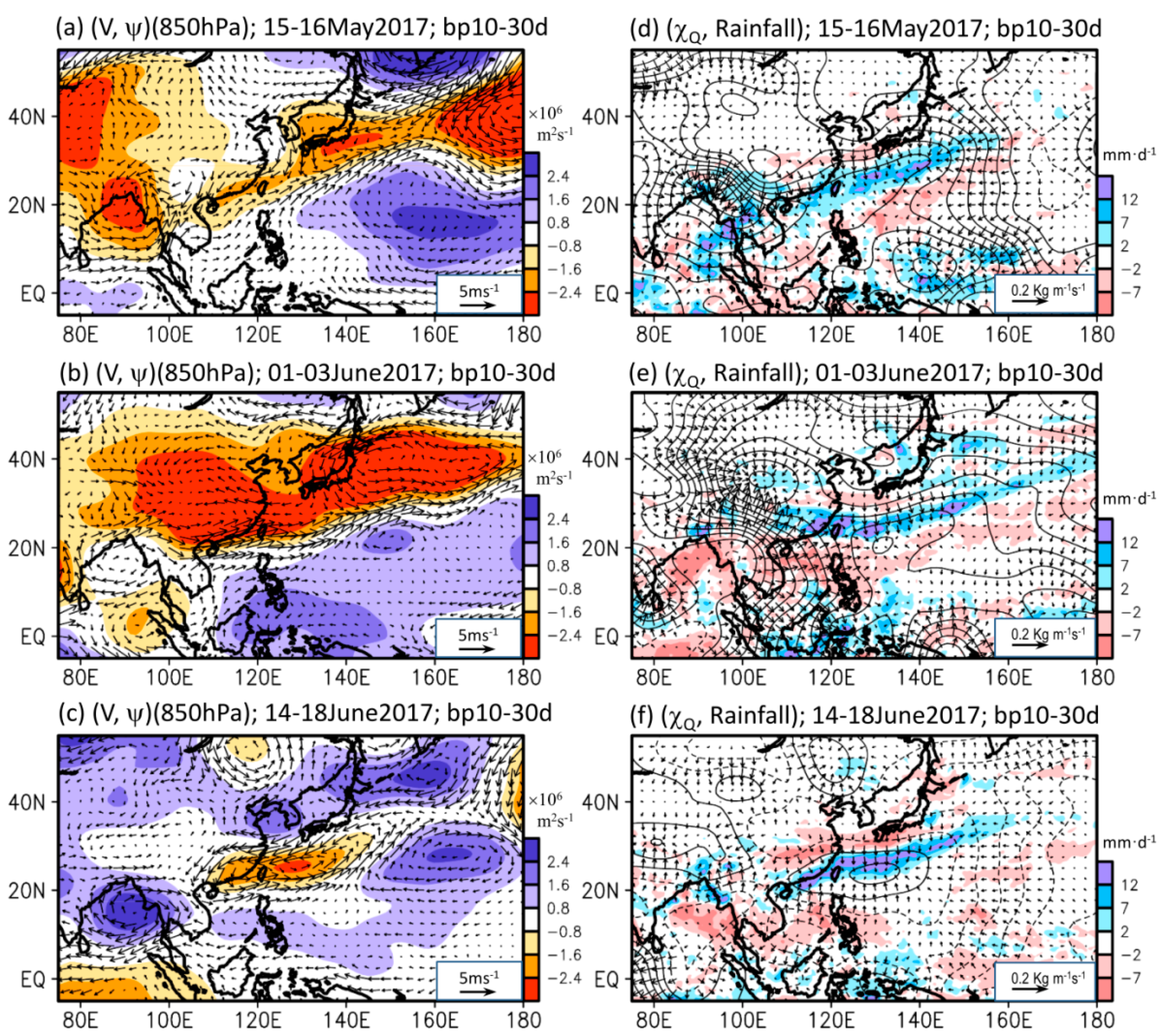
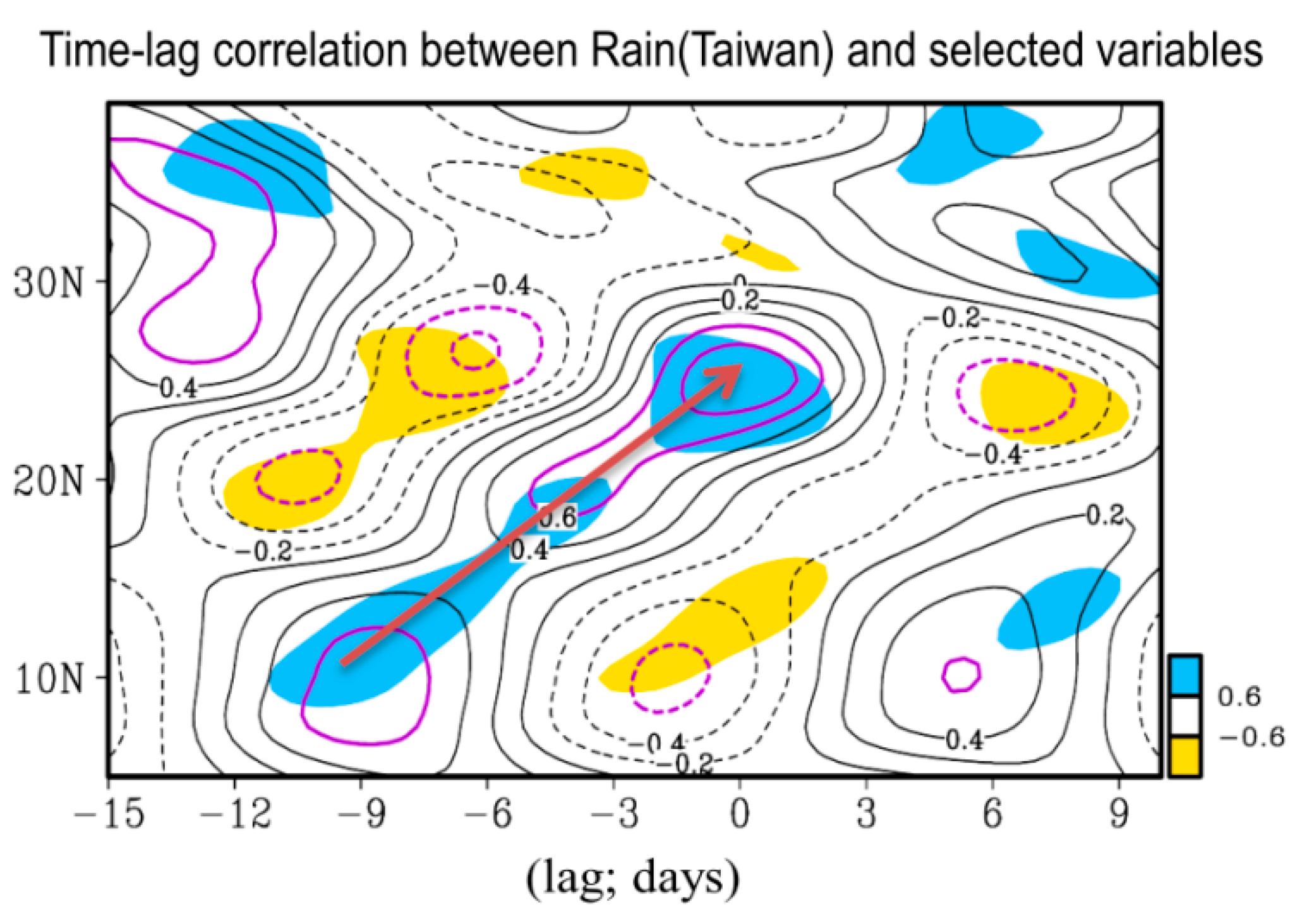
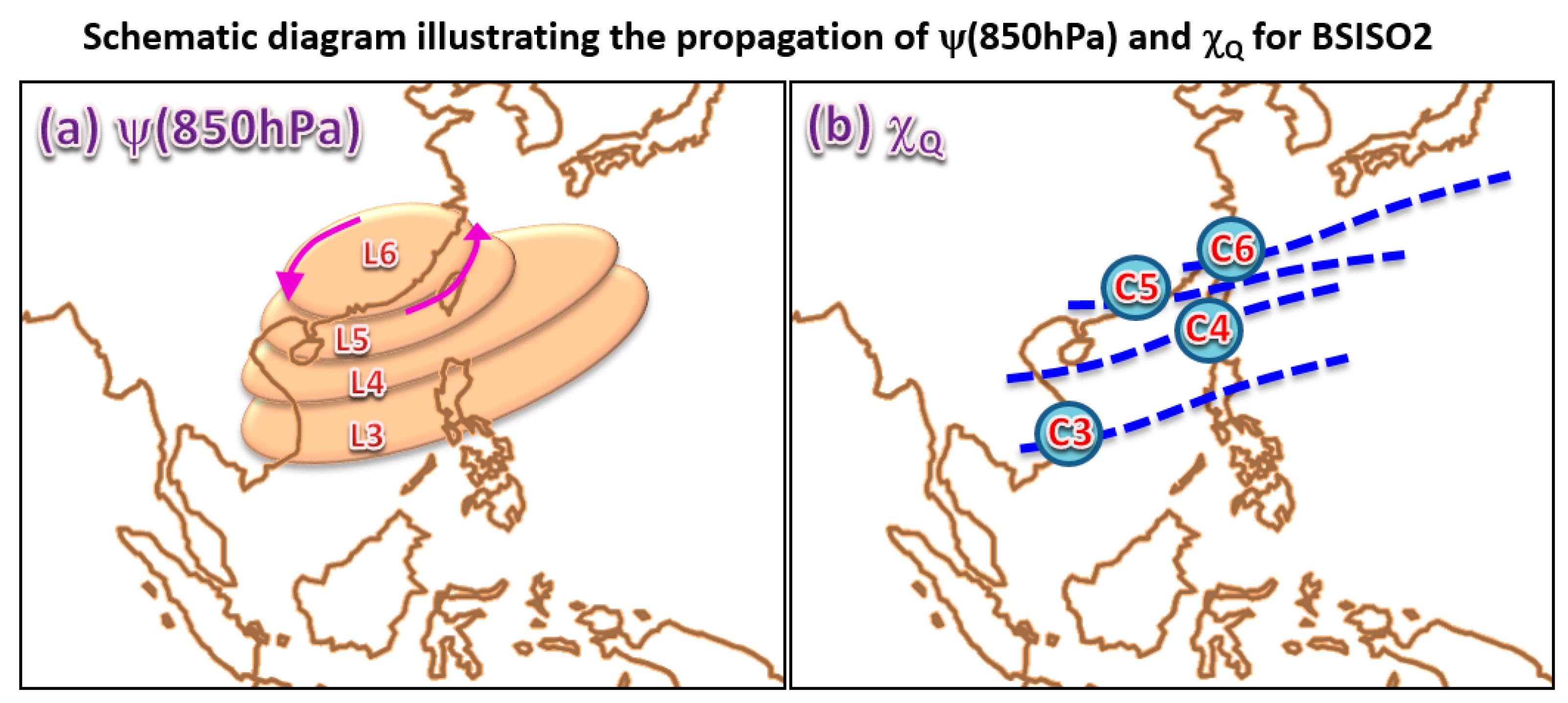
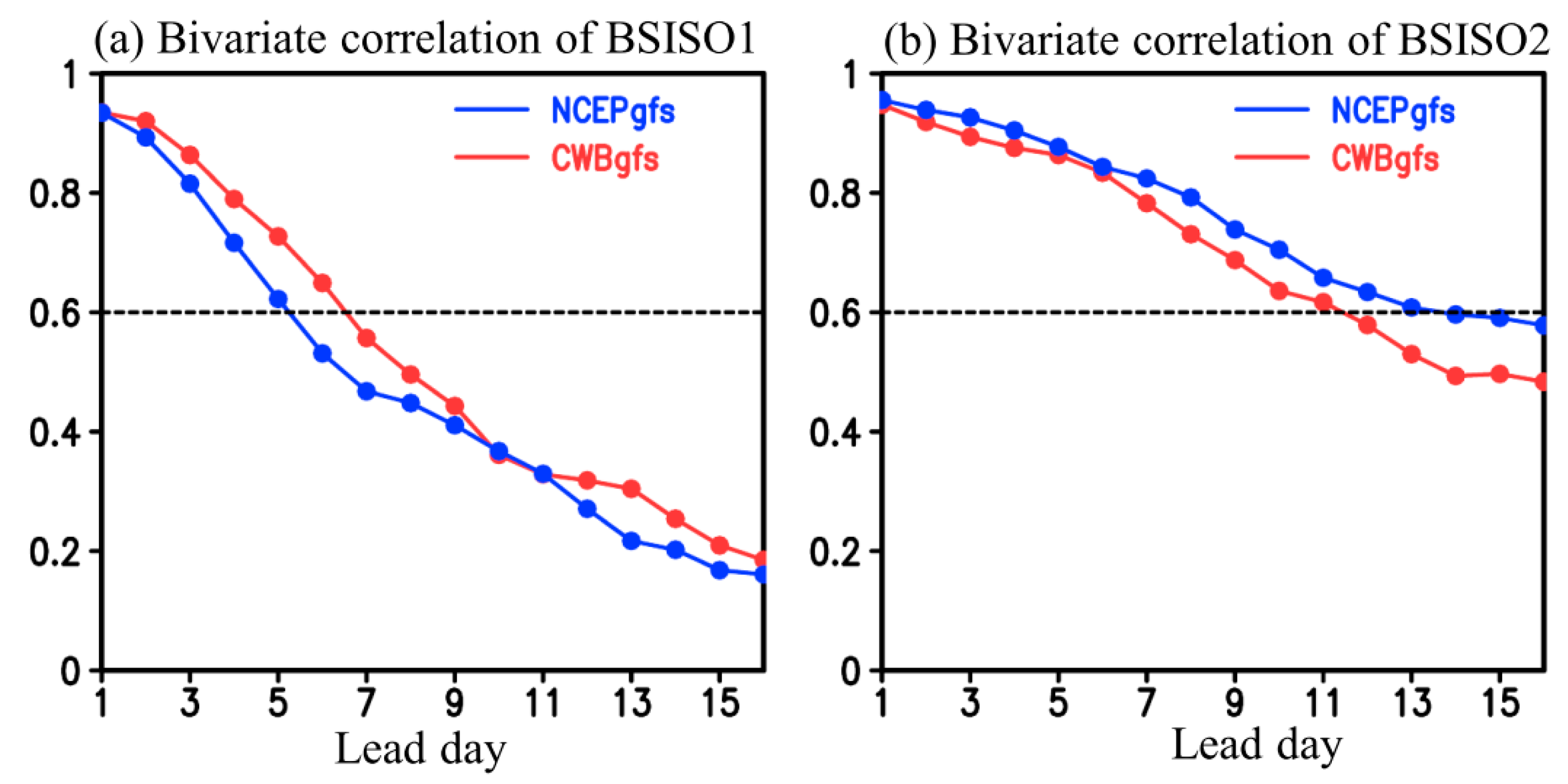
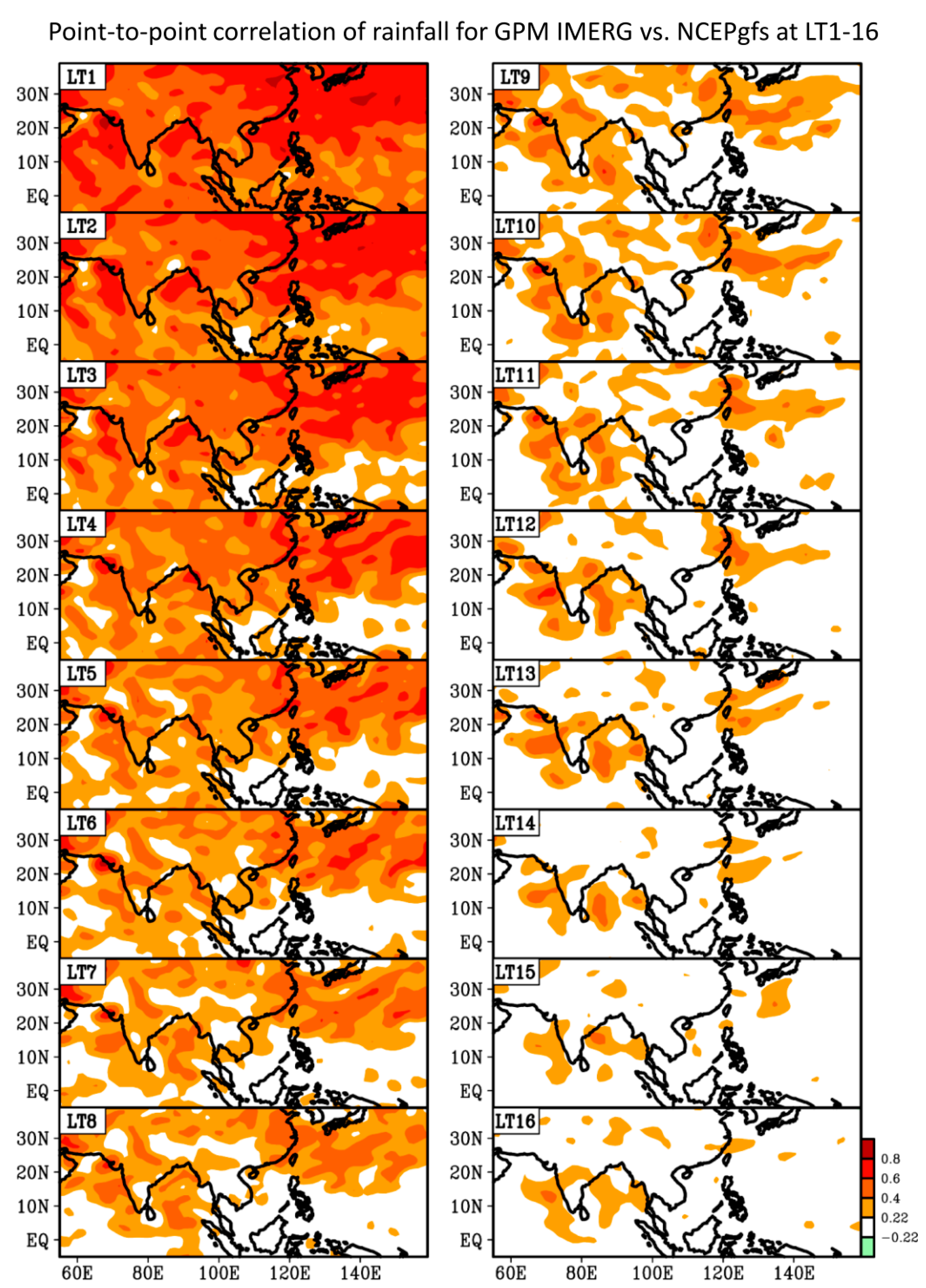
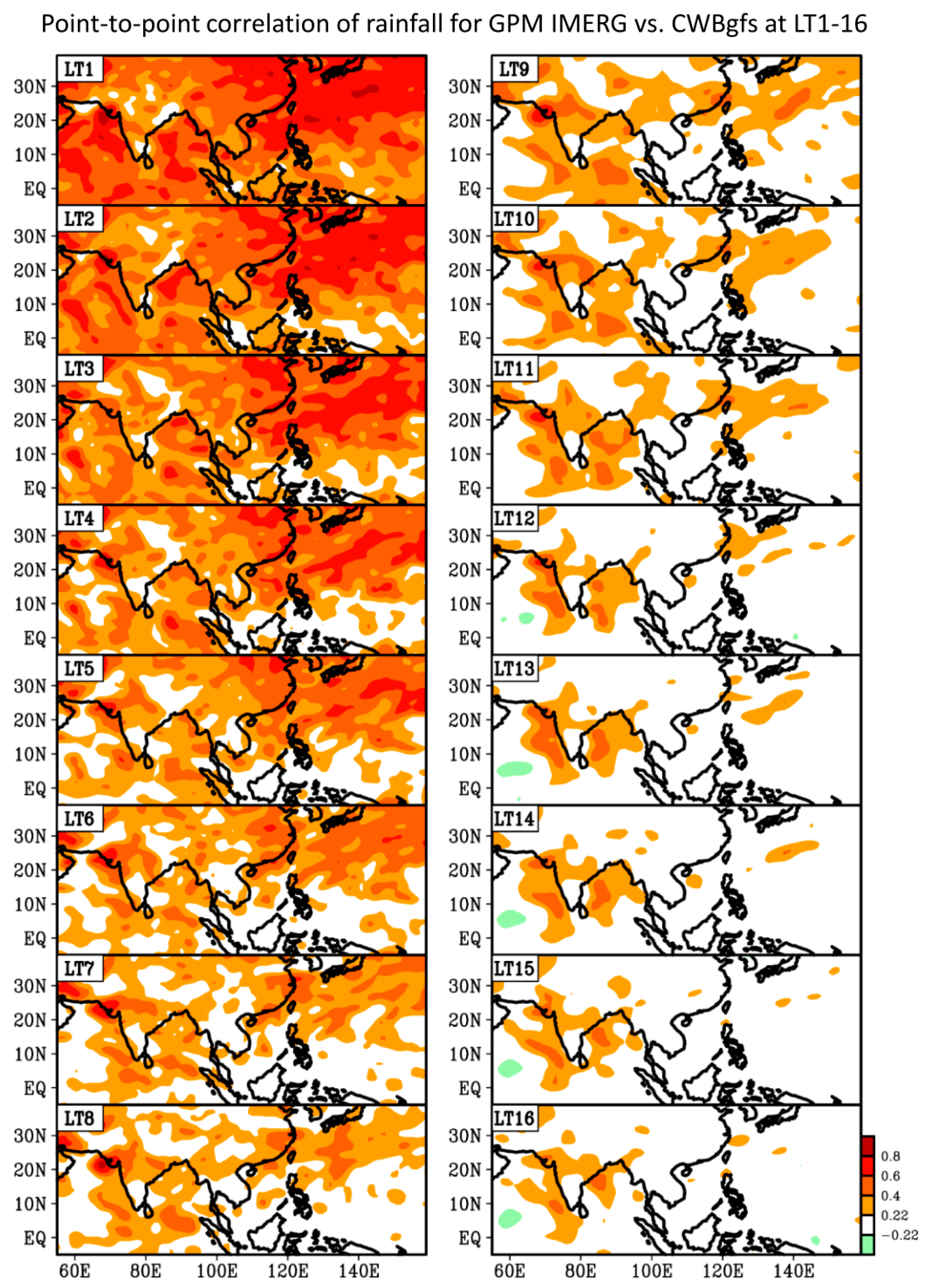
| Models | NCEPgfs (T1534L64) for LT1-10 (T574L64) for LT11-16 | CWBgfs (T511L60) |
|---|---|---|
| Settings | ||
| Data Assimilation | Hybrid GSI | Hybrid GSI |
| Horizontal Resolution | 13 km for LT1-10 23 km for LT11-16 | 25 km |
| Vertical Resolution | S-P Hybrid Coordinate with 64 Levels | S-P Hybrid Coordinate with 60 Levels |
| Top Level Pressure | 0.27 mb | 0.1 mb |
| Land Surface Model | Noah Land Surface Model [29] | Noah Land Surface Model [29] |
| Vertical Mixing | Hong and Pan [30] Han and Pan [31] | Hong and Pan [30] Han and Pan [31] |
| Cumulus Convection | Han and Pan [31] | Han and Pan [31] |
| Shallow Convection | Han and Pan [31] | Han and Pan [31] |
| Cloud Microphysics Parameterization | Zhao and Carr [32] | Zhao and Carr [32] |
| Radiation | Clough et al. [33] Iacono et al. [34] | Clough et al. [33] Iacono et al. [34] |
| Orographic Gravity Wave Drag | Kim and Arakawa [35] | Palmer et al. [36] |
| Non-Orographic Gravity Wave Drag | Chun and Baik [37] | Scinocca [38] |
© 2019 by the authors. Licensee MDPI, Basel, Switzerland. This article is an open access article distributed under the terms and conditions of the Creative Commons Attribution (CC BY) license (http://creativecommons.org/licenses/by/4.0/).
Share and Cite
Huang, W.-R.; Liu, P.-Y.; Chen, J.-H.; Deng, L. Impact of Boreal Summer Intra-Seasonal Oscillations on the Heavy Rainfall Events in Taiwan during the 2017 Meiyu Season. Atmosphere 2019, 10, 205. https://doi.org/10.3390/atmos10040205
Huang W-R, Liu P-Y, Chen J-H, Deng L. Impact of Boreal Summer Intra-Seasonal Oscillations on the Heavy Rainfall Events in Taiwan during the 2017 Meiyu Season. Atmosphere. 2019; 10(4):205. https://doi.org/10.3390/atmos10040205
Chicago/Turabian StyleHuang, Wan-Ru, Pin-Yi Liu, Jen-Her Chen, and Liping Deng. 2019. "Impact of Boreal Summer Intra-Seasonal Oscillations on the Heavy Rainfall Events in Taiwan during the 2017 Meiyu Season" Atmosphere 10, no. 4: 205. https://doi.org/10.3390/atmos10040205
APA StyleHuang, W.-R., Liu, P.-Y., Chen, J.-H., & Deng, L. (2019). Impact of Boreal Summer Intra-Seasonal Oscillations on the Heavy Rainfall Events in Taiwan during the 2017 Meiyu Season. Atmosphere, 10(4), 205. https://doi.org/10.3390/atmos10040205






